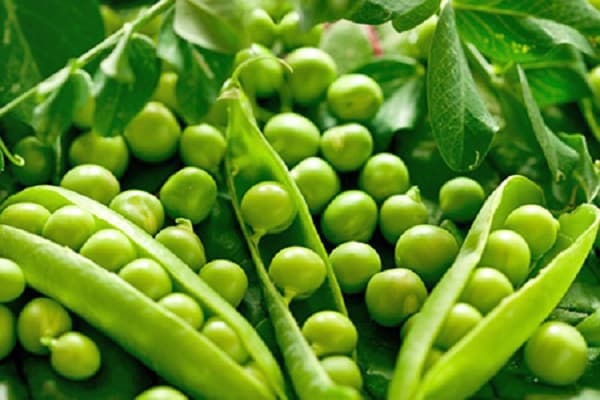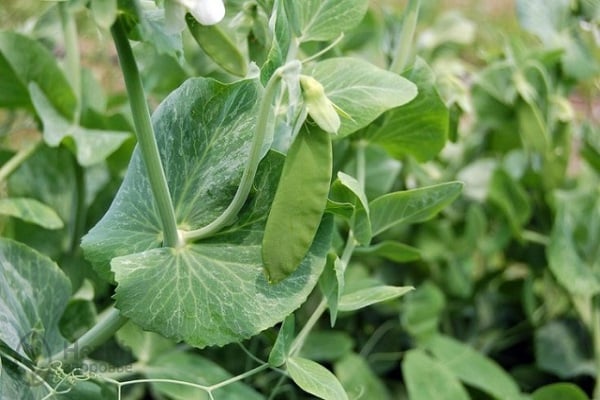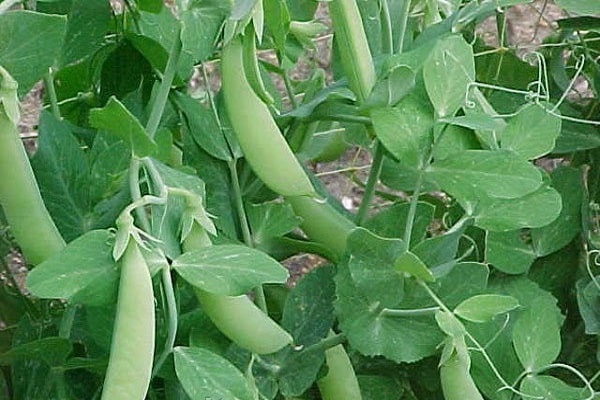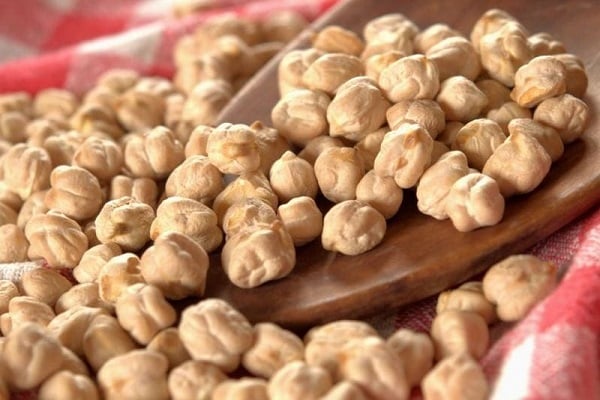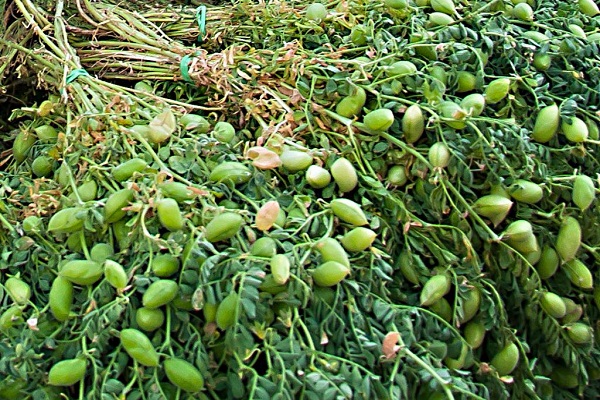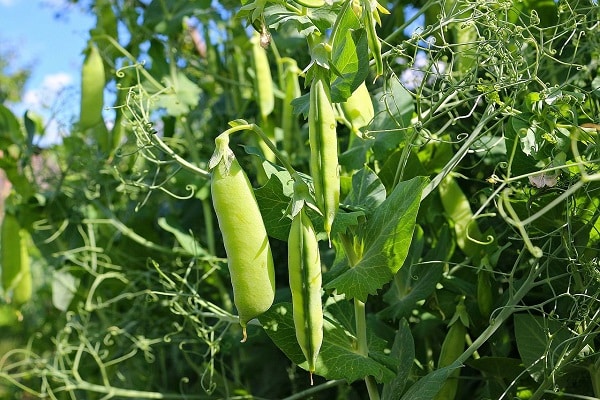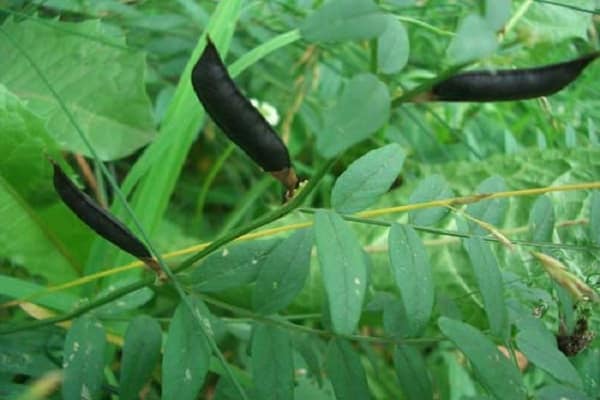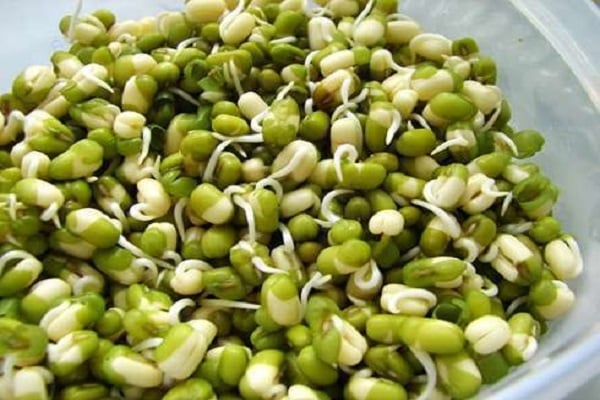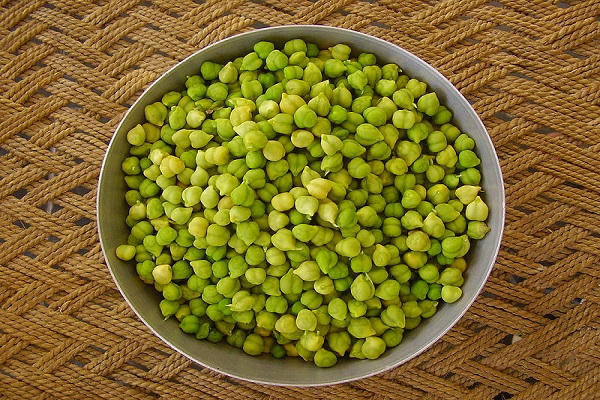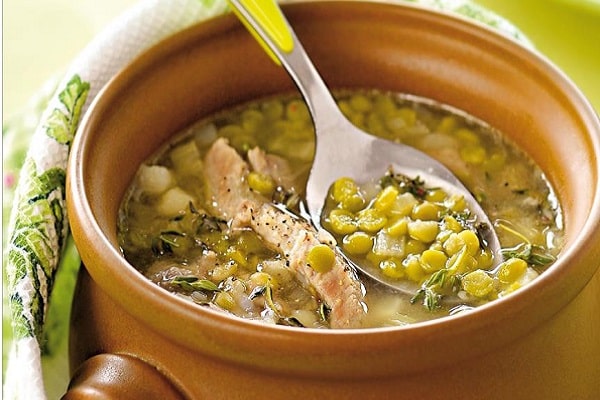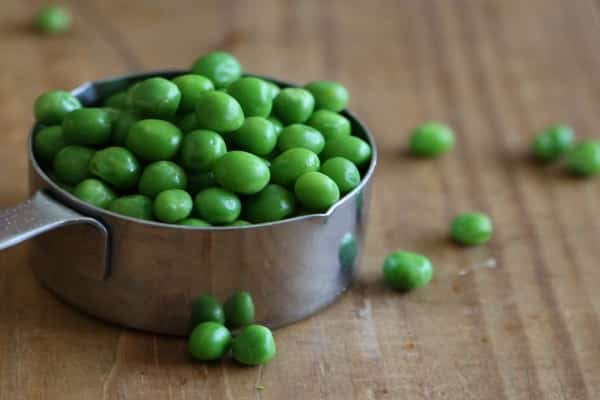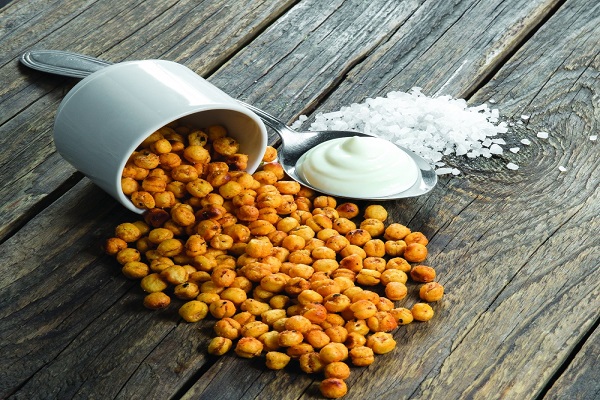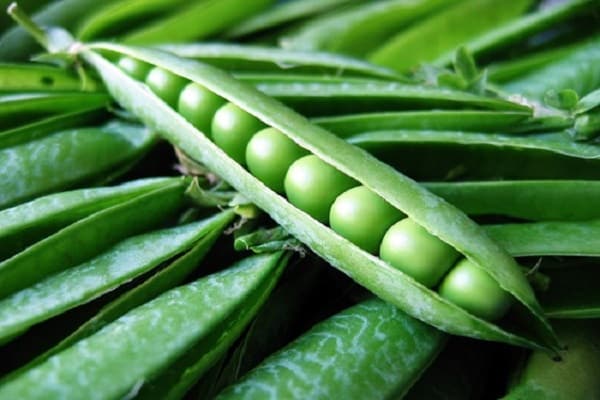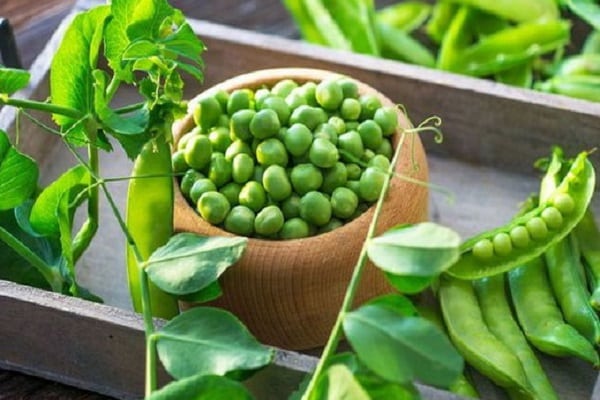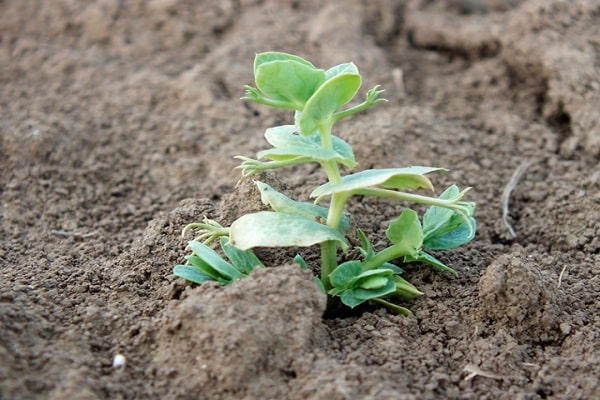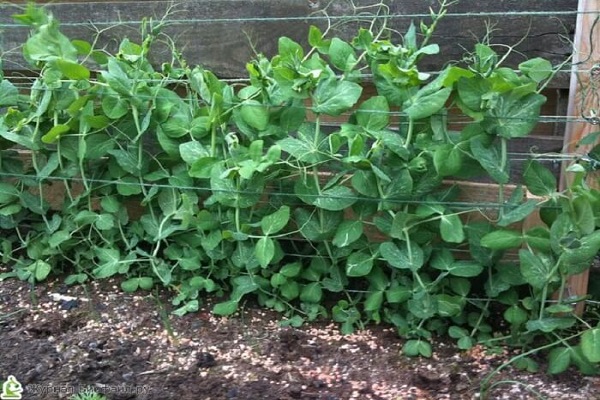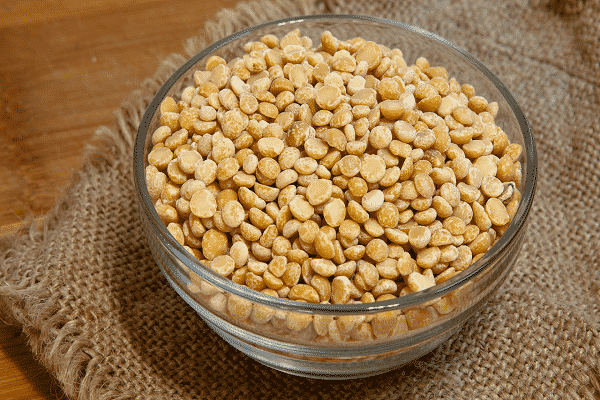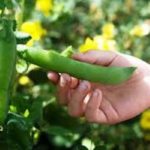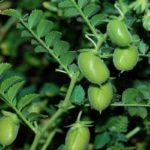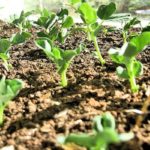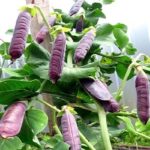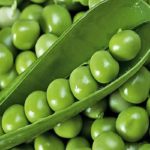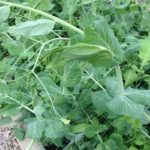Pisum sativum - pea is a representative of the most ancient cultivated plants. It is believed that its homeland was the countries of the East. The Dutch were the first Europeans to appreciate the taste and benefits of the new product. The rapid spread of the culture was facilitated by: simple cultivation technology, good taste and many beneficial properties. Knowing everything about peas, you can improve your health and improve your vitality.
Origin
A valuable food and fodder plant, peas are one of the oldest cultivated crops. Presumably it was familiar to mankind in the Bronze and Stone Ages. The history of the origin of the plant has not been fully studied. Since ancient times it has been bred in India. The ancestor of cultivated varieties is the field pea.
Man began to cultivate small-seeded forms of seed peas long before our era, simultaneously with cereals. In the countries of Central and Northern Europe, the plant was cultivated already in the 2nd-3rd millennium BC. e. It has been grown in Russia since the end of the 17th century. Before the advent of potatoes, it was part of the main products.
Types and varieties
Peas (lat. Písum) are a genus of perennial and annual herbaceous plants of the Legume family. Species of the genus are represented by herbs with weakly climbing stems, feathery leaves and branched tendrils clinging to support. The most common of all types is the sowing one, which is divided into three variety groups: shelling, brain and sugar.
Dry shelling pea grains are used to prepare soups, side dishes and other dishes. Pea flour is produced from overripe seeds. Light brain varieties are used in the canning industry, dark ones for freezing. Sugar varieties are most often used in the form of sweet, unripe pods (pods are unique to plants belonging to the cruciferous family).
The best peeling varieties are Alpha, Viola, Atlant, Premium, Izumrud, Tropar. The best brain varieties are Belladonna, Calvedon, Debut, Medovik, Sweet Gigan. The description of the Belladonna variety specifically notes its high yield, resistance to frost and high taste.
In summer cottages, it is recommended to grow the most prolific varieties of sugar peas: Inexhaustible, Zhegalova 112, Rubchik, Pervenets and Sakharny 2.
Turkish peas, Uzbek chickpeas
Chickpeas are the oldest member of the legume family. It has many names - Turkish chickpeas, walnut peas, Uzbek chickpeas, lamb peas, nohat, bubbler, shish and others. The plant's homeland is considered to be the Middle East and Central Asia, where it is called golden grain. It is also grown in Eastern Europe and Mediterranean countries, Africa and South America.
Chickpea seeds dating back to the 5th century BC have been discovered in Greece. e. Bronze period peas have been found in Iran. Since the time of Avicenna, chickpeas have not only been used as food, but also for medicinal purposes. It was believed that it cleanses the blood and heals the kidneys and liver. Helps with skin diseases (eczema, furunculosis, psoriasis), increases male strength.
Uzbek chickpea is an annual plant with swollen short beans containing 1-3 rough peas in the shape of a lamb's head. Grows up to 70 cm in height. It has good yield and disease resistance. The skin of the peas is white or brown. Indian varieties are green.
Has a pronounced nutty taste. Widely used in cooking for making soups, pilaf, cutlets, salads, hummus. Sprouted chickpeas are used in dietary and therapeutic nutrition.
Sea grade
Sea variety, or Japanese china (Lathyrus japonicus) is a plant of the China genus of the Legume family. The habitat of this species is a territory stretched in a narrow strip along the northern part of the Pacific coast. The plant grows on sandy and rocky shores. It is a herbaceous perennial, unlike sown green peas.Reaches 30 cm in height.
Japanese china blooms in July and bears fruit in August. The oblong-oval beans of the sea variety reach 5 cm in length. The plant is grown in natural habitats. Japanese china is widely used for decorative purposes; it is most common in the design of rocky gardens.
The sea variety is the traditional food of the peoples of the north. The Eskimos of Alaska use leaves and sprouted seeds for food, make flour and stew from legumes, and prepare a hot drink that replaces coffee. Fresh stems and leaves of the plant are used in folk medicine as a remedy for rheumatism.
Mouse variety
Mouse pea (Vícia crácca) is a herbaceous perennial of the Pea genus of the Legume family. Mouse peas have many popular names - crane peas, chenille, sparrow pods, mouse vetch, sparrow flower, etc. It is distinguished by a wide growing area. Found in meadows, fields, slopes, forest edges and roadsides.
The green mass contains a large amount of protein, vitamin C, carotene, and phosphorus. The chemical composition of the plant has not been fully studied.
Branched clinging stems grow up to 120 cm. The leaves are pinnate with 6-10 pairs of leaflets; in mouse pea there are 2 stipules at the base of the petioles. Flowering continues throughout the summer. The fruits are beans, approximately 20 mm long. It is used as a valuable fodder, medicinal and honey plant.
Mung bean peas
Mung bean (lat. Vigna radiata) is an annual herbaceous plant of the Vigna genus of the Legume family. The homeland of this leguminous crop is India. Other names: mung beans, golden beans, Asian peas, radiata beans. A beautiful and graceful plant that looks more like a bean.The thin leaves of mung bean peas end in highly branched tendrils. The small green seeds are oval shaped.
Mung bean is widely used in the national cuisines of China, Japan, Korea, India, Central and Southeast Asia. It is eaten peeled and sprouted. Mung bean sprouts are a classic component of Asian cuisine. The fruits of this crop contain folic acid, vitamins A, C, E, group B, potassium, phosphorus, manganese, magnesium, iron, silicon, selenium and other useful elements.
In folk medicine, mung bean is used to treat allergies, asthma, and arthritis. Regular consumption of mung beans has a positive effect on the functioning of the cardiovascular system, normalizes blood pressure, strengthens bone tissue and helps maintain joint flexibility.
Calorie content and composition
The calorie content and chemical composition of the product varies depending on which variety of the pea genus it belongs to. The most calories are contained in dried shelling peas - 348 kcal/100 g. The calorie content of fresh green peas of brain and sugar varieties does not exceed 80 kcal/100 g. Due to its low calorie content and a large list of vitamins and minerals, the product is classified as dietary.
Peas contain 2-3 times more protein than grain crops. This effect is due to the symbiosis of all legumes with nodule bacteria. The high content of complete protein in combination with vitamins and microelements makes it a good alternative to meat and an indispensable product for vegetarian nutrition.
The plant contains vitamins A, C, E, P and the entire group B, proteins, fats, amino acids, dietary fiber, minerals - selenium, phosphorus, magnesium, potassium, copper, zinc, chromium, manganese, boron, vanadium, cobalt, silicon, molybdenum, iodine, strontium, zirconium and others.
Properties and healthy recipes
The tasty and healthy pea fruit serves as the basis for the preparation of many old and new dishes. There are hundreds of recipes for healthy food made from different types of it. The exceptional properties and characteristics of the plant have found application in dietary and therapeutic nutrition.
For good health
Peas can rightfully be called a medicinal plant. All its varieties are widely used in folk medicine. It is used to treat diseases of the kidneys, liver, and gastrointestinal tract. Used as an anticonvulsant, sedative, tonic, diuretic. Externally - as a wound healing and hemostatic agent.
Regular use improves vision and memory, improves immunity. Pea fruits are often called shoulder blades and are eaten fresh to strengthen the heart muscle and normalize digestion. Just one handful of young peas will provide a daily dose of nicotinic acid, which normalizes cholesterol and serves to prevent atherosclerosis.
For beauty
An effective anti-aging remedy is nourishing pea masks with sour cream, cottage cheese, yolk and other ingredients. Including peas in the diet will promote clean and smooth skin, strengthen teeth and nails, and hair growth. A decoction of crushed flowers and pea grass will help with facial swelling.
For children
Nutrition peas are especially useful children.They happily eat green peas of sugar and brain varieties. In baby food, shelled peas must also be used for preparing soups and side dishes.
Contraindications
Despite the beneficial properties of the pea plant, there are a number of restrictions on its use. It is contraindicated in acute nephritis, progressive gout, thrombophlebitis, increased blood clotting, and during periods of exacerbation of gastrointestinal diseases. At the same time, it is useful to eat 3-4 pieces of fresh or soaked peas in water. for heartburn. Also contraindicated for use are Crohn's disease, bladder pathologies, and cholecystitis.
Growing
Planting begins in early spring, as soon as the ground warms up a little. The plant is not afraid of light frosts. In order to constantly have a fresh harvest of green blades in the spring and summer, you need to re-sow every 7-10 days. It is recommended to plant peas in crop rotation with potatoes and cabbage. It is a good precursor for all crops (except legumes).
Peas prefer light, fertile soil with low groundwater levels. In swampy and low-lying areas it gets sick from excess moisture. Ripens best in well-lit and ventilated areas. The use of fresh manure as a fertilizer is unacceptable, as this stimulates increased growth of green mass to the detriment of fruit set.
Before planting, it is useful to add ash - it will replace potash fertilizers. Peas are green manure plants that are effective natural fertilizers. They not only serve as a source of useful substances that increase soil fertility, but also improve the structure of the top layer, and also heal the soil. After harvesting, the roots and stems are not removed from the site, but are embedded in the soil during autumn digging to enrich it with nitrogen.
Before planting, field peas are soaked in water at room temperature for 10-12 hours to ensure quick and vigorous germination. You can select high-quality seed material by placing the seeds in salted water. Peas suitable for planting will settle to the bottom, after which they should be washed with clean water.
The seeds are planted to a depth of 4-6 cm. The distance between the peas in the rows is approximately 10-15 cm. The interval between the rows is 35-40 cm. After sowing, the soil in the rows is compacted to retain moisture. If the seed is of high quality, the seedlings will appear within a week. Maintenance is simple and includes loosening and moderate watering. During hot and dry periods, watering should be plentiful.
Storage
Legume harvesting continues throughout the summer. Depending on the type of crop, different storage methods are used. Peas collected for fresh consumption are stored in the refrigerator in plastic bags or containers. For long-term storage, it can be canned, dried or frozen. Dry peas are stored in a dark and dry place.

